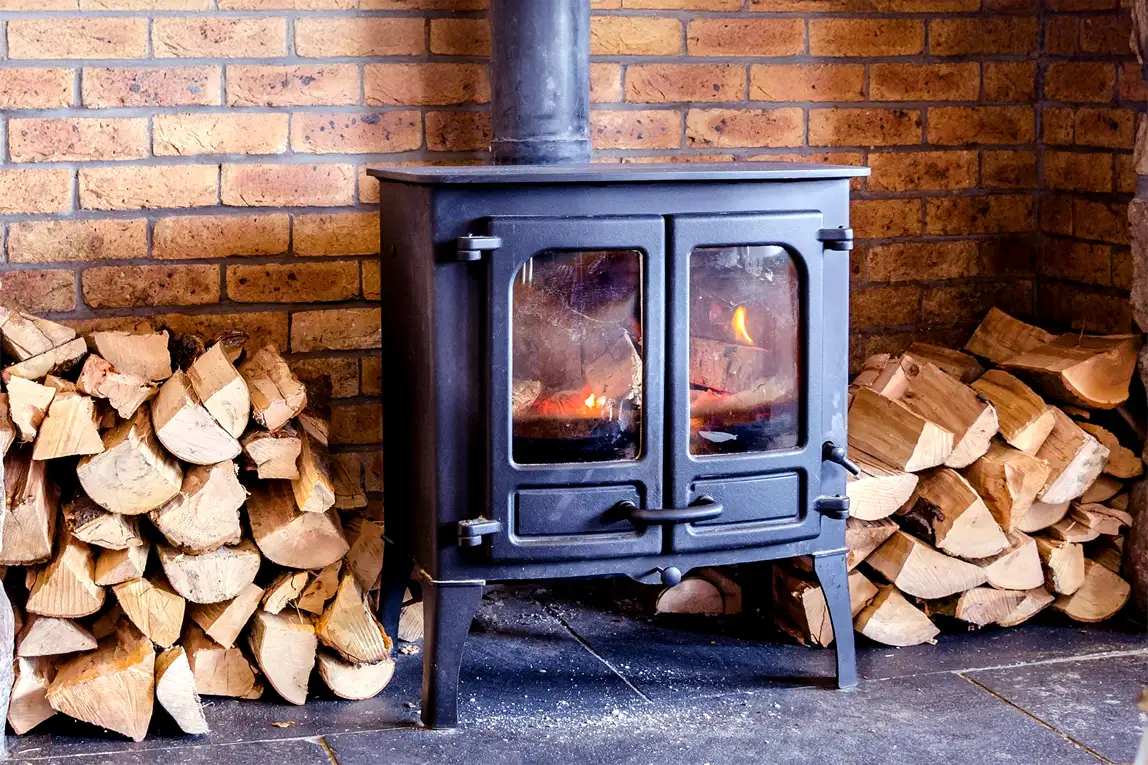Stacking & Burn Rate Tips
When you order a bulk bag of kiln-dried logs from Peak Logs, you want to make sure you’re getting the very best value from your purchase. From stacking your firewood correctly to controlling your burn rate, there are several ways to stretch each bag further while still enjoying a hot, efficient fire. In this guide, we’ll show you how to maximise every bulk bag of logs with practical stacking and burning tips.
Why Proper Stacking Matters
Correctly stacking your logs ensures they stay dry, accessible, and ready to burn when you need them. Even kiln-dried firewood can lose efficiency if left in damp or poorly ventilated spaces.
Best Places to Store Your Logs
- Log stores with open sides and a slanted roof for airflow.
- Outdoor racks raised off the ground to prevent dampness.
- Well-ventilated sheds or garages with good circulation.
For more guidance, read our blog on how to store logs correctly.
Stacking Tips
- Always stack with the bark facing upwards to help shed moisture.
- Leave small gaps between logs to encourage airflow.
- Keep your stack neat to make the most of storage space and reduce waste.
Managing Burn Rate for Maximum Efficiency
How you burn your logs is just as important as how you store them. By managing your burn rate, you’ll get more heat and longer-lasting fires from every log.
Use the Right Fuel Mix
Softwood burns hotter and faster, while hardwood burns slower and steadier. Many customers find that softwood logs are perfect for quick, hot fires, while hardwood works best for overnight burns.
Control Airflow
- Start with kindling and small logs to get a hot base.
- Adjust vents to manage oxygen flow — more air for a hotter flame, less air for a slower burn.
- Keep chimneys clear to maintain consistent airflow and safety.
Avoid Overloading
It’s tempting to pack your stove full of logs, but adding too many at once can waste fuel. Instead, add one or two logs at a time to maintain an even burn rate.
Bulk Bag Value: Getting the Most from Your Order
Each bulk bag is packed with Woodsure Ready to Burn certified logs, with moisture levels under 18% to guarantee efficiency. By stacking correctly and managing your fire carefully, you can:
- Save money by reducing fuel waste.
- Heat your home more effectively.
- Make your free delivery go even further.
Quick Reference Guide
| Tip | Benefit |
|---|---|
| Stack with airflow gaps | Logs stay dry and efficient |
| Mix softwood and hardwood | Faster starts + longer burns |
| Adjust stove vents | Optimise burn rate and heat output |
| Add logs gradually | Prevent wasted fuel |
🔥 Order Your Next Bulk Bag Today
Get the most from your firewood this season with our kiln-dried bulk bags. Free delivery is available within 18 miles of Buxton on orders over £65.
Frequently Asked Questions
How long does a bulk bag of logs last?
It depends on how often you use your stove. On average, a family using their burner most evenings can expect a bulk bag to last several weeks to a couple of months.
Should I mix hardwood and softwood?
Yes. Softwood logs are great for quick heat, while hardwood provides a steady overnight burn. Using both gives you flexibility and better value.
Do I need a log store for my bulk bag?
A log store is ideal, but not essential. As long as your logs are stacked off the ground, sheltered from rain, and well ventilated, they’ll stay ready to burn.
What makes Peak Logs different?
We supply sustainably sourced, kiln-dried logs with moisture content under 18%. All our firewood is Woodsure certified, perfectly cut for most burners, and delivered free within our Buxton radius.
Conclusion
By stacking your logs correctly and managing your burn rate, you can maximise the value of every bulk bag. With the right balance of hardwood and softwood, efficient airflow, and careful storage, your fire will stay hotter for longer — saving you money and effort.
Browse our full range of kiln-dried logs here and get the most out of your next order.
